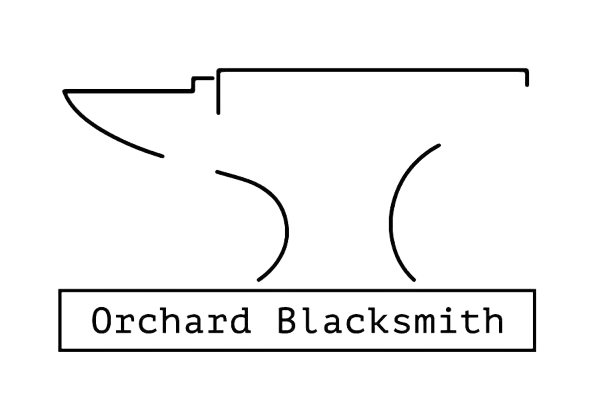Beyond the Basics: Innovative Ways to Use Punches, Drifts, and Chisels
When people think about blacksmithing, they often imagine fire, hammering, and heavy forging—but the real magic lies in the small tools that create precision, detail, and structure. Three of the most essential (and often underappreciated) tools in a blacksmith’s toolkit are punches, drifts, and chisels.
These tools aren't just for making holes or cutting hot metal—they open up a world of creative possibilities for any blacksmith, from the beginner to the master. In this post, we’ll look at what each tool does and explore some unexpected and creative ways to use them in your work.
What’s the Difference Between Punches, Drifts, and Chisels?
Punches are used to pierce holes through hot metal. They come in many shapes—round, square, oval—and can be decorative or functional.
Drifts are tapering tools used to enlarge and shape a hole that has been started by a punch. They're also great for refining the hole’s geometry.
Chisels are cutting tools, used both for hot and cold work, to create grooves, splits, or decorative cuts.
1. Creating Decorative Piercings
You can use punches and drifts not just for functional holes (like rivet or handle holes) but also to add flair and ornamentation. For example:
Punching teardrop or leaf-shaped holes in gate elements
Adding a pattern of negative space to fireplace screens
Using shaped drifts to stretch these holes into elegant, organic forms
Try mixing hole sizes and spacing to create texture and rhythm in your work.
2. Making Tool Handles and Eyelets
When making hammers, axes, or top tools, a drift is essential to form the eye. But the same concept can be adapted creatively:
Make a set of bottle openers or keyrings with punched and drifted holes
Forge simple garden tools with comfortable, oval eye holes for wood handles
Drift out hanging loops on hooks or brackets for a more finished look
You’re not just making a hole—you’re designing how a tool is gripped, hung, or used.
3. Hot-Cutting & Texturing with Chisels
Chisels go far beyond cutting stock to length. Try these uses:
Create grooves or fullers in decorative pieces
Use a chisel to simulate wood grain or bark texture on forged leaves or branches
Hot-cut decorative slits in handles or ornamental bars
Add engraved details or incised lines to metal art
By experimenting with different chisel angles and depths, you can etch personality into your work.
4. Sculptural Work & Artistic Forging
For blacksmiths interested in metal sculpture:
Use punches to make eye sockets, nostrils, or texture in animal heads
Drift open “mouths” or abstract openings in solid bar stock
Use chisels to carve stylized feathers, fur, or geometric forms
Combining all three tools can add layers of depth and realism to your sculptural forging.
5. Joinery Without Welding
Before welding became common, blacksmiths used techniques like collars, rivets, and punched joints to hold work together:
Punch and drift clean holes for riveted joints
Use chisels to create mortise-style slots in flat bar
Combine punch-and-drift work with tenons to build pieces with zero welding
Not only does this showcase traditional skill—it gives your work a truly timeless look.
Bonus Tip: Make Your Own Tools
Here’s where it gets meta: once you master punches, drifts, and chisels, you can forge your own versions to suit your personal style. Try making:
A hexagonal punch for a unique modern look
A curved chisel for flowing vine patterns
A drift that tapers into a square to round shape
This lets you customize your designs in ways factory tools never could.
Final Thoughts
Punches, drifts, and chisels might seem like simple tools, but in the hands of a creative blacksmith, they’re instruments of true expression. Whether you're crafting functional hardware, custom tools, or artistic décor, these tools can elevate your work from solid to spectacular.
If you would like to discuss a potential project with us, please do not hesitate to contact us.
